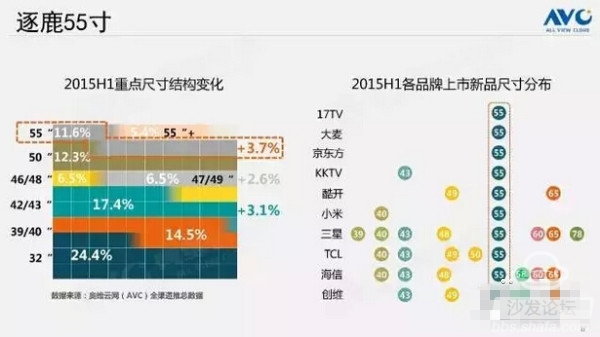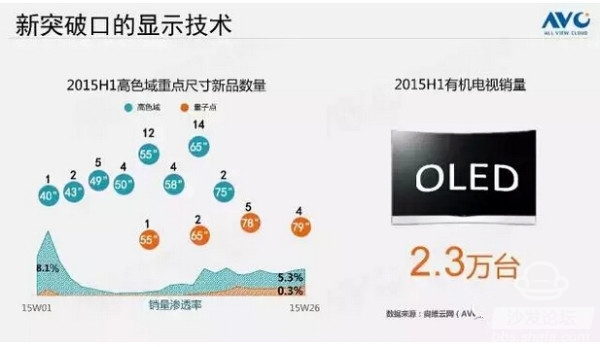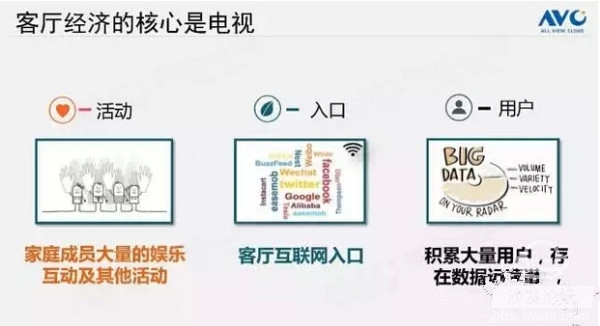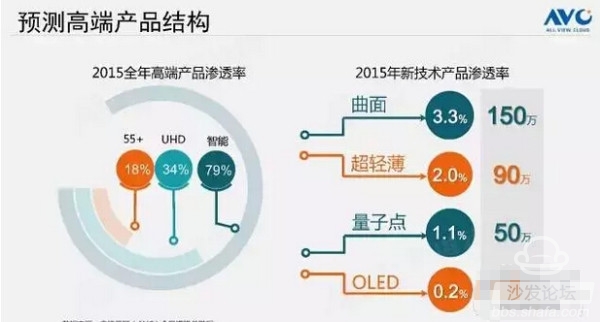Offer Windows 10 Posready,Windows 10 Point Of Sale,Posready Windows 10 From China Manufacturer
Best Window 10 Pos System for retail
If you own a retail store, you likely need a retail Window 10 Pos System that offers inventory management and can connect to a bar code scanner and receipt printer. Our custom retail point of sale for small business, does all this and more.
We also offer easy-to-use email marketing software with effective templates and sample copy to let your customers know about your sales and special promotions.
Best Window 10 Pos System for contractors and home repair
mobile payment processing
Window 10 Pos System Windows 10 Posready,Windows 10 Point Of Sale,Posready Windows 10,Square Point Of Sale For Windows Shenzhen Gmaii Technology Limited , https://www.gmaiipos.com
In 2015, the market has already passed half of the market. How about the situation of China's TV market in the first half of the year?
First of all, let's look at the global TV market. In the first half of this year, the global TV shipments were 101 million units, of which China made 065 million, accounting for 64%. From the perspective of the regional distribution of shipments, Asia Pacific shipped 17.9 million units, Europe shipped 20.29 million units, and mainland China shipped the most to 23.41 million units, accounting for 23% of global share. China has become a manufacturing center and consumer center for global television.
We specifically look at the retail situation in the domestic market. In the first half of the year, the retail sales of terminals reached 22.11 million units, which was a year-on-year increase of 5.6%. The sales amount was 74.4 billion yuan, an increase of 6.9% year-on-year. The increase in sales is greater than the increase in sales. This is a good phenomenon that warrants attention. From the sales rhythm point of view, the performance in February this year was very eye-catching. The retail volume in a single month increased by 109% year-on-year, which was mainly due to the fact that during the Spring Festival, e-commerce and logistics were superior to the usual continuous services. This result directly pulled up the average for the first half of the year. 
The second feature is that rural areas have gradually become protagonists, both online and offline. The percentage of rural areas under the offline market was 51%, which was a year-on-year increase of 2%. On the right, we can see that in the rural market, online transactions are almost doubling. With the implementation of multi-directional strategies such as rural e-commerce, mobile e-commerce, channel sinking, and inventory subsidence, we expect this year's e-commerce market share in rural areas to reach 15%.
As mentioned earlier, the increase in sales is greater than the increase in sales, which indicates that the average price is increasing. The overall trend in recent years has been the decline in average prices. Therefore, this is a phenomenon seen in the first half of the year: prices have shown a rebound. The red and green lines in the above figure represent the changes in the average offline and online prices since the beginning of the year. Although there is no lack of volatility, the overall upward trend is obvious. In the figure below, we have also specially sorted out the changes in the average price of each size. The average price of most of the dimensions is declining. From two perspectives, it can be seen that the decisive factor in the rise of the overall average price is the upgrading of products, and more specifically, the large size of the sales structure.
In the first half of this year, the average size of domestic TV sales reached 43.7. The forecast for the whole year will rush to 44.1. This will be the first time that the Chinese market has surpassed the North American market and become the largest in the world. The large-size trend is also reflected in the total sales area in the first half of the year, up 16% year-on-year to 12.1 million square meters. 
The penetration rate of ultra high definition television in the first half of this year reached 24%, which was an increase of 13% over the same period of last year. Hisense's internal penetration rate was the highest, exceeding 5 percentage points of the industry level. In the large size segment, UHD's penetration rate is particularly high, 49% to 54%, and 58 inches to 70%. The development of UHD in China and in the world cannot be separated from the promotion of upstream resources. Throughout the year, we predict that the UHD penetration rate at the panel end will reach 16%, which is an increase of 8 percentage points from the same period of last year. UHD panels account for 16% of the total. In addition, more than half of them have invested in the Chinese market. Therefore, at the same time, China has become the global high-end center for television. 

Picture quality is the most important indicator of LCD TVs. Currently, it is also the most room for improvement. Engineers have done a lot of efforts. Since the end of last year, high-color TVs have risen in China. It can be seen that high-gamut technologies have been used in new products. Dimensions, and once reached 8% sales penetration. The common high color gamut technology always has the contradiction between color gamut and brightness. With the advent of quantum dot technology, the picture quality and power consumption have been balanced. At present, quantum dot products are mainly concentrated in 55, 55, 78, 79 sizes.
In the replacement of LCD TVs, we focused on the performance of OLED organic TVs. In the first half of the year, OLED TVs sold 23,000 units and shipped 110,000 units worldwide. Western Europe, Asia Pacific, and China occupy the top three.
The topic of our meeting today is intelligence. Next, we look at a set of intelligence-related data. Since 2012, the proportion of smart TVs in China has been rising year by year. According to our special statistics from Aowei Cloud, in the first half of the year, the penetration rate of smart TV reached 72%. As of June 30, the cumulative number of smart TVs reached 85.8 million units. The accumulated inventory of OTT boxes reached 52.1 million units. The activation rate of smart TVs was 82%. The number of daily active users reached 25 million.
The amount of smart hardware terminals is also changing the user's viewing behavior, and more and more users are choosing to watch more smart TVs. In 2012, the average duration of watching traditional TVs is 3 hours a day, and the average duration of watching smart TVs is 2 hours. Up to now, the conversion took two hours, each of which was 1.5 hours and 3.5 hours. In addition, paying for premium content will also become a natural behavior for users, which has reached 52%. With the change of user's viewing behavior and the improvement of smart TV operating capability, the value of the TV terminal is also shifting from traditional TV to smart TV. Looking at this year, there are vendors that can achieve smart TVs with an ARPU of more than 100 yuan. According to public information, the activation of domestic television of Hisense and Skyworth has exceeded 10 million, reaching the turning point of operation. For this level of vendors, it will be a billion-dollar value creation, and it will also lead to the emergence of large-scale revenue and more mature business models across the industry.
In the first half of this year, Internet brands were making their way to cities, and by June, sales of Internet brands had accounted for 16%. Accumulated for half a year, accounting for 9% of the entire brand. We also teamed up with Tencent.com to conduct a consumer survey, showing that 39% of consumers expressed their preference for Internet brands. Therefore, Internet brands are not only robbing traditional brands, but are also likely to bring about new increases. Inspired by this, more and more players are participating in the market. We expect that more TV brands will appear before consumers.
In the second half of the year, Ovid predicts that TV sales will reach 22.92 million units, down 3.2% year-on-year, and will drop in five months in six months. The annual sales of 45.03 million units, pulled by the first half, rose by 0.9% year-on-year. Among them, online sales of 11.75 million units, accounting for 26%.
In fact, television has always been a barometer for large home appliances. We have extended the timeline to look at it. In addition to the specific cold-year caliber of air-conditioners, TV began in 2014 and led the company as a whole.
So, how to understand the rapid return of the market? First of all, the three major stimulus policies that lasted five years gradually exited. When these administratively more intense interventions were removed, the Chinese television market began to brewing a new stage of development, namely, the self-growth cycle. The second reason is that real estate, which has a strong relationship with the TV market, has been regulated since 2013, and the real estate market has cooled down. Next, we observe that real estate reforms will continue to deepen. The economic measures of interest rates, credit, and taxation, as well as medium and long-term institutional development will replace the previous one-way regulation. For the market outlook, we believe that the overall supply and demand of the industry has undergone a fundamental change, the increase in real estate mainly comes from rigid demand, the market will recover steadily, but V-shaped reversal is unlikely. There is also a very important reason that the enterprise side has pursued the benign development of structure and profit from the blind pursuit of scale. The client's viewing needs are also being upgraded, and various multimedia terminals such as boxes and Pads have been configured. Therefore, the return of the market to a certain extent is also a common function of enterprises, users, and the whole society.
Under the new cycle, we believe that the living room economy is an expected growth point. We have a definition of the living room economy: Take the smart home as a carrier to enhance the home life experience, so as to realize the orderly activity of value is the living room economy. We estimate that this year, the value of the hardware and derivative services created by the entire parlor economy will be 230 billion. By 2020, the overall size of the living room economy will reach 1100 billion. The rise of the living room economy has opened the ceiling of the entire home appliance chain, and the trillion-dollar level also makes the mining of the living room economy a common understanding of the industry and the direction of power generation in the coming years. Increasingly high participation will inevitably trigger the restructuring of the entire industry chain and generate a rich profit model.
Based on this, our Ove Cloud Network judged that the future development of Internet TV will inevitably have three trends.
The first is the development of cloud management. On the cloud side, it mainly deals with the processing of massive information, using distributed instead of stand-alone, and then implementing content digitization and business IT. On the pipeline side, IP refers to the network, which mainly solves the problem of massive information transmission. Broadband, ultra-broadband, 4G technologies, and the development of a new generation of network infrastructure will broaden the width of the pipeline, support network efficiency, and provide good access to a wealth of terminals. condition. In terms of terminals, the key to achieving terminal intelligence is the multimedia presentation of information. Only stronger performance and easier operation can support more diverse multimedia applications. Of course, the auto-extending or multi-directional cooperation model based on each link will rise rapidly.
Therefore, the second trend in the development of Internet TV, industrial integration.
In 2013, a content company named LeTV took advantage of its own copyright and CDN and cooperated with its foundry Foxconn to quickly enter the living room and bring Internet learning to the entire market. Xiaomi uses fan culture and cooperates with the foundry, Wistron, to launch TVs across borders and formally promoted to become a core product this year. In 2014, we successively saw the cooperation between Konka and Tencent, Changhong, and Youku. This year's fashion is the collaboration between Ali and Lenovo, Storm and the commander. As such, we roughly divide it into three types of financial integration models. One is the joint manufacturer of internet companies, and the other extends down the value chain. The second category is the cooperation between traditional brands and Internet companies based on different starting points, their respective division of labor, and sharing of revenue. The third category is the deep cooperation between traditional manufacturers and Internet companies to create joint ventures and brand new Internet TV brands. These models now seem to be difficult to determine which is an advanced production relationship, but the deep integration into one will become the main theme. 
Well, now, the competition in the television industry is already a three-dimensional competition in the entire chain. Combining these three trends, we believe that the future will be a victory for all-round manufacturers. There must be traditional industrial capabilities, that is, hardware operations. Must also have the ecological construction force. Hardware operational power is the foundation, including product, quality, after-sales, supply chain, and channel capabilities. The ecological construction force is development, including the deep development of software, content resources, marketing innovation, user operations, and value transformation. The overall composition of the current television industry chain, "ten sugar cane." 
Finally, we routinely report to everyone the forecast of the size of various subdivided products for the current year. The 55-inch + penetration rate was 18%, which was a year-on-year increase of 5 percentage points. The UHD penetration rate is 34%, which is an increase of 20 percentage points from last year. The penetration rate of smart TV was 79%, which was 22% higher than last year. For some of the most active cutting-edge products, we also forecast that the surface will reach 1.5 million units this year, with a penetration rate of 3.3%. Ultra-thin 900,000 units, penetration rate of 2%. Quantum TV 500,000 units, penetration rate of 1.1%. 100,000 OLED TVs, penetration rate of 0.2%. 
TV semi-annual inventory: large integration of total living room economy
From the perspective of sales channels, there are two obvious characteristics in recent years. The first is that the online market still shows strong barbaric growth capabilities. In the first half of the year, the sales volume of e-commerce increased by 77% year-on-year. All types of offline channels showed different degrees of decline year-on-year. In terms of absolute value, the scale of e-commerce reached 5.28 million units, accounting for 24% of the total. Within e-commerce, professional e-commerce is far ahead, accounting for 43%. The gap between self-operated e-commerce, platform e-commerce and vertical e-commerce is small, and the remaining share of about 60% is divided.
In terms of subdivision size, the structure of each size segment is also changing. In the first half of this year, the 32-inch is still the highest, accounting for 24.4%, but actually it has shrunk dramatically, down 8.5 percentage points year-on-year. The share gradually eroded by 40 and 42 segments. In terms of increase, 55-inch, 42/43, 47/49-inch were ranked in the top three, and only 55 inches were up 3.7 percent year-on-year. From the aspect of new products released in the past six months, we can also see that the 55-inch model has been defined by the manufacturer as a high ground because of its advantages in sales, profits and image. Whether it is a traditional brand, an Internet brand, or a luxury brand, the 55-inch size is the starting size without exception.
Currently, the two most diversified industrial technologies in the LCD TV market, curved surface and ultra-thin, have a monitoring penetration rate of 1.5% and 0.3% in the first half of the year. Among them, the curved surface has the advantages of its highly technical appearance and immersive viewing experience. It shipped 300,000 units in the first half of the year, and it has to scale to 4.5 million units throughout the year. Ultra-thin and light, in the first quarter of this year's press conference, our Ove Cloud Network defined the thickness of the main body of the TV is less than 9mm ultra-thin TV. Due to the late listing, shipments in the first half of the year were still relatively small. Throughout the year, globally, we saw 1.5 million units. We believe that ultra-thin and light-weight products will usher in an outbreak after the full range of products are launched in the second half of the year.
The third trend in the development of Internet TV is that we will see that the ecosystem based on Internet TV will be ripened by private capital and the business model will become clearer and clearer. At present, everyone has reached a consensus that the five most potential scenes on Internet TV are videos, games, e-commerce, education, local life, and others. From the figure, it can be seen that in 2014, the size of the video, including advertising and on-demand production, was 2.3 billion, and the game was about 10 billion. This year, the video ecology will be the first to mature and it will double to reach 5.5 billion, and it is expected to reach 19 billion in 2017. After the game is mature, it will be the game ecology. At present, China's game industry is still relatively weak at the initial stage. With reference to the development speed of mobile games, we optimistically predict that by 2017 there will be a scale of more than 10 billion yuan. E-commerce, online education, etc. We still need time to judge the incubation. On the whole, this year, the ecological value will be 9.8 billion, and it will show a compound growth rate of more than 90% in the next few years.
In the next two years, the TV market will still be in a consolidation phase, and the overall scale will oscillate in a narrow range around 45 million units. However, we do not think it is top-level verification. In the long run, the TV market will gradually recover at a low rate of less than 3%. In fact, we believe that sales are not the end point. The sale of products is just the beginning of operations. We are concerned that the number of key operating data for smart TVs is increasing, and the number of smart TVs is increasing at an annual rate of 40 million. The amount will accelerate, and by 2018, it will exceed 200 million units and reach 235 million units. The activation of TV users is expected to reach 78 million by the end of this year. By 2018, the cumulative activation will be close to 200 million. This year, we forecast that the average number of daily active users is about 32 million, with a daily activity of 30%. By 2018, the average number of daily active users will reach 118 million, and the daily activity will exceed 50%. We believe that with the increase in the number of operating bases and the improvement of operational capabilities, various types of business models for the living room economy will be accelerated and ushered in prosperity.
This content is copyrighted exclusively by SofaNet. Welcome manufacturers to further exchanges and cooperation with us to create more in-depth product reports.
Smart TV box recommended to install sofa butler, download address: http://app.shafa.com/
Sofa Net is an Internet technology company specializing in smart TVs and boxes. It owns popular products such as sofa butlers, sofa tables, and sofa forums. It has been committed to providing high quality application resources for smart TV and TV box users and active community exchanges. And authoritative evaluation of smart TV products.